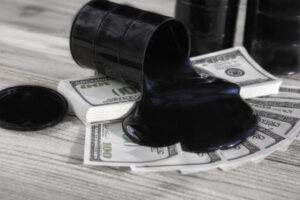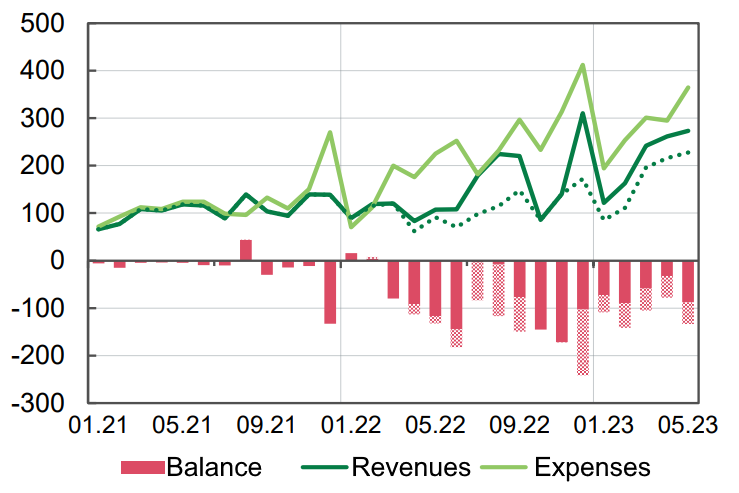
In these months and years full of challenges, the fundamental platform for our country’s full participation in the global healthcare system is being built.
In September, representatives of the ZDOROVI humanitarian agency team took part in two major international events – the First Ladies and Gentlemen Summit and the Americares Ukraine Partner Summit. Natalia Tulinova, the founder of the National Humanitarian Aid Agency ZDOROVI, told about it.
According to her, the Americares Ukraine Partner Summit discussed support for Ukrainian medical institutions and ensuring patients’ access to medical care in the occupied and frontline territories.
The ZDOROVI team members shared their experience in organizing the delivery of humanitarian medical aid to hospitals in the region with a difficult security situation, their experience of effective interaction with international donors and implementation of large humanitarian projects and missions.
“We are building a charitable organization that meets the standards of work in the international community in every detail, so that our donors and partners can be confident in the transparency of the processes related to humanitarian aid to Ukraine,” explained Natalia Tulinova, founder of ZDOROVI.
She noted that the organization carries out analytical, monitoring and communication work to identify the urgent needs of the sector and provide medical institutions with the necessary assistance, and participates in building a network of international partnerships to support the medical sector in Ukraine.
“The fundamental platform for our country’s full participation in the global healthcare system is being built. We must make every effort to ensure that our partners are confident in the reliability and transparency of cooperation,” Tulinova emphasized.
In August, the ZDOROVI team delivered 29 tons of humanitarian aid to Ukrainian hospitals in 49 locations across the country. The large-scale humanitarian work of ZDOROVI is carried out in cooperation with international partners, including ICAP Ednannia, MedShare, Embrace, RAZOM for UKRAINE, NOVA Ukraine, Americares, USAID, PHILIPS and other charitable foundations and organizations.

Stock indices of Western European countries are falling on Thursday on the hawkish statements of the head of the Federal Reserve System (Fed) Jerome Powell.
The composite index of the largest European companies Stoxx Europe 600 as of 11:38 a.m. fell by 0.73% to 457.31 points.
The British FTSE 100 lost 0.46%, the German DAX – 0.76%, the French CAC 40 – 1.02%. Italy’s FTSE MIB and Spain’s IBEX 35 fell by 1.2% and 0.7%, respectively.
The day before, the Federal Reserve expectedly left the key interest rate at 5.25-5.5% per annum.
Meanwhile, Powell said during a press conference following the meeting that the central bank is ready to raise the rate again if necessary. Powell also noted that a “soft landing” of the US economy is not his baseline scenario, although it is possible.
The dot plot of forecasts – a chart showing the individual expectations of the members of the Fed Board of Governors and the heads of the Federal Reserve Banks (FRBs) regarding interest rates – shows that 12 out of 19 US central bankers expect another rate hike this year.
Later on Thursday, the results of the Bank of England meeting will be announced. Analysts still believe that the British Central Bank will raise the base rate by 25 bps to 5.5%, although after yesterday’s data indicating an unexpected slowdown in inflation in the UK in August, the probability of keeping the rate at the same level has increased slightly.
Shares of mining companies in London are falling amid lower metal prices. Fresnillo, Rio Tinto, Glencore, and Anglo American are all down by more than 1%.
The price of CVS Group shares rises by 3.2%. The British chain of veterinary clinics reported an increase in revenue and pre-tax profit in the last fiscal year amid strong demand for animal care services. The company’s pre-tax profit amounted to 53.9 million pounds ($66.5 million), while revenue amounted to 608.3 million pounds.
JD Sports Fashion’s capitalization increased by 7.8%. The British clothing retailer recorded an increase in pre-tax profit in the first half of the year ended July 31 to 375.2 million pounds from 298.3 million a year earlier, while revenue increased to 4.78 billion pounds from 4.42 billion pounds. Both figures exceeded analysts’ forecasts.
Another clothing retailer, Next PLC, raised its full-year forecasts after a strong performance in the first half of the year. Pre-tax profit in February-July rose to 419.8 million pounds from 400.6 million pounds, while revenue increased to 2.52 billion pounds from 2.38 billion pounds. The forecast of pre-tax profit for the fiscal year was raised to 875 million from 845 million pounds.
Next shares are up 1.9%.
Shares of the Norwegian financial company Storebrand are up 0.8% on the news of the sale of a 50% stake in the insurance joint venture Storebrand Helseforsikring to Ergo International. Financial terms were not disclosed, but Storebrand expects to record a positive effect of NOK 1.1 billion ($102 million) from the deal.
The French supermarket chain Casino Guichard-Perrachon has downgraded its sales and profit forecasts in France for 2024-2028. The company’s shares fell by 4.6%.
In Germany, the leaders of the decline are Sartorius securities, which are down 2.5%, as well as Porsche AG preference shares, which are down 2.1%.
In Paris, Airbus (-2.4%) and Saipem (-3.5%) are actively declining, while in Milan, the stock is down.

Benchmark oil prices continue to decline on Thursday morning, showing negative dynamics for the third consecutive session, despite data on the reduction of fuel stocks in the United States.
The price of November futures for Brent on the London ICE Futures exchange at 8:09 a.m. is $92.86 per barrel, which is $0.67 (0.72%) lower than at the close of the previous session. On Wednesday, these contracts fell by $0.81 (0.9%) to $93.53 per barrel.
Quotations for November futures for WTI in electronic trading on the New York Mercantile Exchange (NYMEX) by this time decreased by $0.68 (0.76%) to $88.98 per barrel. At the end of the previous session, they fell by $0.82 (0.9%) to $89.66 per barrel.
Commercial oil inventories in the United States last week decreased by 2.14 million barrels, according to the weekly report of the country’s Energy Ministry. Analysts surveyed by Bloomberg had predicted a decline of 1.7 million barrels.
Meanwhile, gasoline stocks fell by 831 thousand barrels, and distillate stocks decreased by 2.87 million barrels. Experts expected an increase in gasoline stocks by 1.1 million barrels and an increase in distillate stocks by 1.05 million barrels.
Oil reserves at the Cushing terminal fell by 2.1 million barrels. Meanwhile, the US Strategic Petroleum Reserve (SPR) was replenished by 600 thousand barrels.
“We do believe that some consolidation is warranted before the next upside move,” Tariq Zaheer, managing partner at Tyche Capital Advisors, told MarketWatch.
With Russia and Saudi Arabia cutting oil production by the end of the year, it is only a matter of time before Brent prices rise to $100 per barrel, he added.
According to Zaheer, “the rise in oil prices may be hindered by high oil prices, as they will put pressure on demand.”
Key indicators of state budget (monthly), UAH bln

Source: Open4Business.com.ua and experts.news

Ukrainian ports on the Danube are now trading mainly in soybeans as the most marginal crop. Despite the constant decline in prices from exporters and local processors, soybeans are profitable for traders and farmers, according to the analytical cooperative “Start”, created within the framework of the All-Ukrainian Agrarian Council (AAC).
“Soybeans are actively contracted for October. There is a huge difference between the prices of Ukrainian soybeans and beans from Argentina, the US and Brazil: domestic soybeans are cheaper by 80-100 USD/t. Exporters, including Turkish and Egyptian ones, take advantage of this. However, Ukrainian traders are ready to keep prices low, i.e., they are “collapsing” the market for themselves. For traders, this is a supermarket culture, which is how they make money today,” the analysts said.
According to the report, even at low prices, soybeans bring profits to producers through any sales channels: sales to local processing plants, exports to the EU, and deliveries to small ports.
“In the next two weeks, the purchase prices of processing plants may drop to 12.5-13 thousand UAH/t, and at the Danube ports – to the conditional level of 340 USD/t. At the same time, the supply of soybeans will not decrease,” the UGA forecasts.

Demand for lithium, which is used to produce electric vehicle batteries, is likely to grow in the coming years, supporting prices that have fallen significantly in recent years, Market Watch reports, citing experts.
“Currently, the world does not produce enough lithium hydroxide to meet the demand driven by the growing popularity of electric vehicles,” said Austin Devaney, chief commercial officer of Piedmont Lithium Inc. Austin Devaney.
According to the International Energy Agency (IEA), the share of electric vehicles in total global vehicle sales last year was 14%. It more than tripled from 4% in 2020. In 2023, global sales of electric vehicles are expected to grow by 35% compared to the previous year.
Fundamental factors suggest that the global electric vehicle market will continue to grow, says Devani.
Meanwhile, the average price of lithium-ion batteries fell by 8.7% in August, falling below $100 per kWh for the first time since August 2021, according to Benchmark Mineral Intelligence. The price reached $98.1 kWh on September 6, which is 33% lower than the peak recorded in March last year – $146.4 kWh.
The global lithium surplus has increased this year compared to last, but S&P Global Commodity Insights expects it to decline over the next three years.
According to S&P Global Commodity’s forecast, this year’s market supply will amount to 990.065 thousand tons of lithium carbonate equivalent, while demand will be 928.717 thousand tons. As a result, the surplus of lithium will reach 61,348 thousand tons compared to 10,061 thousand tons in 2022.
In 2024, the oversupply will decrease to 43 thousand tons of lithium carbonate equivalent, in 2025 – to 11 thousand tons, in 2026 – to 3 thousand tons, and in 2027 a deficit of 8 thousand tons will be recorded, according to S&P Global Commodity.
After 2027, demand for lithium will exceed supply, Devani said, citing Benchmark Mineral Intelligence forecasts.
“We believe that the expected lithium shortage requires the US to increase production capacity and reduce dependence on other countries,” the expert says. The bulk of lithium raw materials used in the US are mined in Australia and South America, with 80% of these raw materials being processed in China, Devani said.
According to him, the total amount of announced investments in battery production capacity in the United States over the past two years amounted to approximately $80 billion. In order for these capacities to be utilized, the annual supply of lithium hydroxide in the United States should reach 715 thousand tons by 2030, which is more than 40 times higher than the volume currently produced in the country (approximately 17 thousand tons).
Devaney noted that his company plans to produce about 60 thousand tons of lithium hydroxide per year in the long term, which is expected to be enough for about 1.2 million electric vehicles per year.